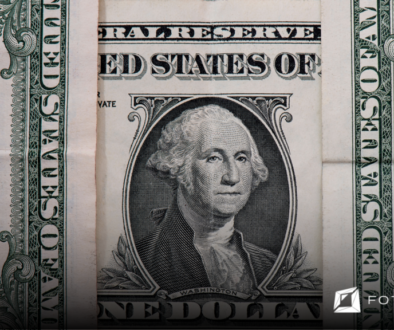The Power of Compound Interest: How to Make Your Money Work for You
According to the late Albert Einstein, “compound interest is the eighth wonder of the world. He who understands it, earns it. He who doesn’t, pays it.” No truer words were ever spoken when it comes to compound interest and its ability to either build wealth or bury you in debt. But first, what is compound interest? In its simplest form, compound interest is the interest you earn (or pay) on interest compounded over time. If you are interested in building wealth (who isn’t) and staying out of debt (who isn’t), understanding how compound interest can either work for you or against you is imperative to harness its power for your future success.
Simple Interest vs Compound Interest
Before we dive into the power of compound interest and how to harness it, it’s important to understand the difference between simple interest and compound interest. Simple interest is based on the principal amount of a deposit or loan and is calculated only on that principal amount. Compound interest, on the other hand, is based on the principal amount and the interest that accumulates on it in every period. See our formulas section at the end of this article for how to calculate simple and compound interest.
With compound interest, your compounding periods can be daily, monthly, quarterly, or yearly. The more frequently the interest compounds, the greater the end result will be. To make this concept simple and easy to understand, let’s take this example:
$100 earning 5% interest each year
At the end of year one, you earned $5 in interest so you now have $105. In year two, you earn another 5% interest on your $105 and now have $110.25. In this example, not only did you earn $5 on your initial $100 principal, but you also earned $0.25 on the $5 in interest you earned in year one. Now that’s the power of compound interest!
The Rule of 72
The Rule of 72 is a simple way to estimate how much an investment will grow over time. If you already know the interest rate, the Rule of 72 can tell you approximately how much time it will take for your investment to double in value. The formula to calculate this is as follows:
72 ➗ r (interest rate or rate of return)
For example, let’s assume you expect to earn a rate of return of 8% per year with an investment, then:
72 ➗ 8 = 9 years for your investment to double in value.
Pretty simple, right? The next time you’re considering an investment, you can use the Rule of 72 to help you do some simple calculations of how long it will take to double your investment.
How to Leverage Compound Interest
The two most powerful tools in your compound interest arsenal are time and money. The longer amount of time you have for an investment to grow, and the more money you pour into it, the greater the compounding effect can be. So, what does this mean for you in practical terms? Let’s take a look at two real-world examples:
Example 1 – Invest $500/mo at the end of each month from age 25 to age 65 earning an 8% annual return, compounded monthly.
In this example, we have additional monthly contributions on top of the initial $500 principal, so we need to add another calculation here called the “future value of a series”. Since compounding factors in time, we also have to take into account when the additional contributions are made, which can be at either the beginning or the end of the time period we are solving for. See our formulas section at the end of this article for the formulas for both of these.
Once we calculate the compound interest and the future value of a series, we then add the two together to get our final number. Since we are assuming $500 is contributed at the end of each month in this example, the high-level formula for calculating the total future value would be:
[Compound Interest] + [FV of a Series (end)]
If you invest $500/mo at the end of each month from age 25 to age 65 earning an 8% annual return that’s compounded monthly, your end result would be $1,757,640 at the end of 40 years (see our formulas section at the end of this article for the math). Pretty amazing what investing just $500/mo for 40 years can turn into, right?
Example 2 – Invest $500/mo at the end of each month from age 45 to age 65 earning an 8% annual return, compounded monthly.
This example is the same as the first, except we are making regular contributions and compounding for only 20 years instead of 40. At the end of 20 years, you would have $296,973.60 (see our formulas section at the end of this article for the math), which is a far cry from the $1.7m number we end up with if we compound for 40 years.
The point here is that it pays to start early! The sooner you start investing and making regular contributions, the better your end results will be. If you want to see how compounding can play out with your own numbers, check out this compound interest calculator from the U.S. Securities and Exchange Commission.
The Best Vehicles for Compound Interest
Now that you understand how compound interest works, you’re probably wondering where you should put your money to best harness its power. The truth is that there are endless options out there, which may include:
- The stock market (individual stocks, dividend-paying stocks, ETF’s, mutual funds, index funds, etc.)
- Bonds (government bonds, municipal bonds, corporate bonds, etc.)
- Real estate (rental properties, real estate investment trusts (REITs), etc.)
- Cash savings (high-yield savings account, CDs, etc.)
Additionally, it’s important to note the impact that taxes can have on compound interest. Many investment vehicles are held in taxable accounts, such as a brokerage account or savings account, and taxes eat into compounded returns. If we’re looking at compounding interest over many years, the effect of taxes on those returns can be substantial. Consequently, the best places to maximize your long-term compounded returns are in tax-advantaged accounts. Tax-advantaged accounts or vehicles may include:
- 401(k)/403(b)s/401(a)/457 plans
- SEP/SIMPLE IRA plans
- Traditional/Roth IRAs
- Health savings accounts (HSAs)
- 529 plans
- Defined-benefit plans
- Municipal bonds (tax-free interest)
This is by no means an exhaustive list of all the different tax-advantaged vehicles you can use, but the point here is that you’ve got options, and the less taxes come into play, the better your compound interest results will be.
Compound Interest and Debt
Lastly, we can’t forget compound interest and how it can affect your debt picture. Just as compound interest can work hard for you, it can also work hard against you if it’s accruing on debt you owe. The most common place we see this have an outsized negative impact is on consumer debt, namely credit cards.
Credit cards tend to carry the highest interest rates of any type of debt out there, and they can be a black hole if you find yourself buried under them. Most credit card companies only require you to pay around 1% of your balance as a minimum payment each month, so if you’re not able to pay enough each month to eat into that balance with high interest accruing on it, it can quickly spiral out of control.
Thus, credit card debt is definitely something to avoid if you can, so make sure you trust yourself with your spending habits and ability to pay your credit cards off if you do choose to use them. However, if you are already buried in credit card debt, and feeling like all hope is lost, don’t fret – it’s not the end of the world. You can try putting a snowball or avalanche debt payoff plan in place, or look to consolidate/refinance your credit card debt with a balance transfer offer or personal loan.
Final Remarks
Compound interest can either work for you or against you. If it’s working for you, it is one of the most powerful tools at your disposal for building wealth. Conversely, if it’s working against you, it can cause your debt load to spiral out of control. Either way, understanding both sides of this equation is imperative in building healthy financial habits and maximizing its potential to assist you in your financial journey. If you are interested in learning more about how to leverage the power of compound interest and avoid its downfalls, schedule a free consultation today with one of our expert advisors to see how we can help!
Formulas
Simple Interest = P x r x t
P = initial principal balance
r = interest rate
t = time period in years
Compound Interest = P(1 +rn )nt
P = initial principal balance
r = interest rate
n = number of times that interest is compounded per unit t
t = the time the money is invested or borrowed for
FV of a Series (beginning) = PMT x {[(1 + rn)nt – 1] ➗ rn} x (1 + rn)
PMT = the monthly payment/contribution
FV of a Series (end) = PMT x {[1 + rn)nt – 1] ➗ rn}
Example 1 – $500 invested at the end of each month from age 25 to age 65 at 8% annual return, compounded monthly.
Total = [Compound interest for principal] + [Future value of a series (end)]
Total = [$500(1+0.08/12)^12*40] + [$500 x {[(1 + 0.08/12)^12*40 – 1]/(0.08/12)}]
Total = [$500(1.00667)^480] + [$500 x {[1.000667^480 – 1]/0.00667}]
Total = [$500(24.273)] + [$500 x {[24.273 – 1]/0.00667}]
Total = $12,136.69 + [$500 x {23.273/0.00667}]
Total = $12,136.69 + [$500 x 3491.001]
Total = $12,136.69 + $1,745,503.04
Total = $1,757,640 final balance at the end of 40 years
Example 2 – $500 invested at the end of each month from age 45 to age 65 at 8% annual return, compounded monthly.
Total = [Compound interest for principal] + [Future value of a series (end)]
Total = [$500(1+0.08/12)^12*20] + [$500 x {[(1 + 0.08/12)^12*20 – 1]/(0.08/12)}]
Total = [$500(1.00667)^240] + [$500 x {[1.000667^240 – 1]/0.00667}]
Total = [$500(4.927)] + [$500 x {[4.927 – 1]/0.00667}]
Total = $2,463.40 + [$500 x {3.927/0.00667}]
Total = $2,463.40 + [$500 x 589.02]
Total = $2,463.40 + $294,510.20
Total = $296,973.60 final balance at the end of 20 years
Securities and investment advisory services offered through Calton & Associates, Inc. member FINRA and SIPC, a Registered Investment Adviser. Forefront Wealth Partners is not owned or controlled by Calton & Associates, Inc.





